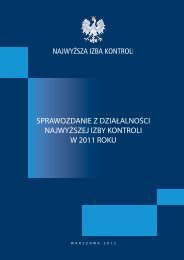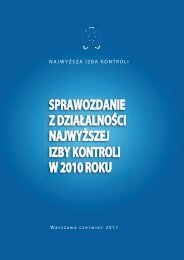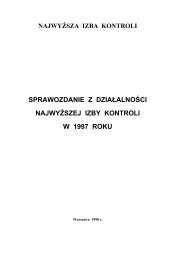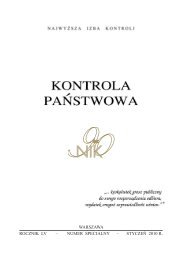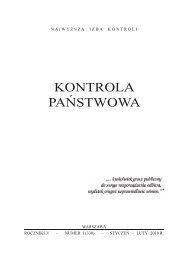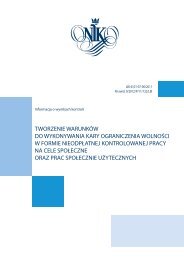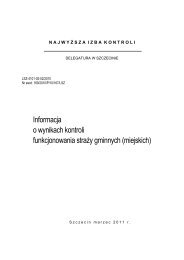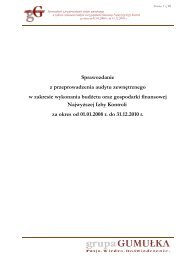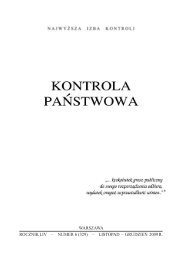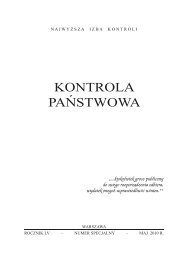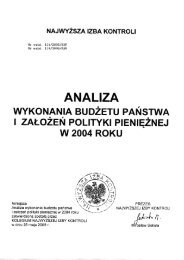NIK peer review report - Najwyższa Izba Kontroli
NIK peer review report - Najwyższa Izba Kontroli
NIK peer review report - Najwyższa Izba Kontroli
You also want an ePaper? Increase the reach of your titles
YUMPU automatically turns print PDFs into web optimized ePapers that Google loves.
ic external <strong>review</strong>s regarding their adequacy, conclusiveness, readability,etc.Improving the readability of <strong>report</strong>s will help <strong>NIK</strong> to ensure that its messagesget across to a larger audience and address other stakeholders thanthe auditees under audit and the recipients of the <strong>report</strong>s in parliament.See ISSAI 400 ReportingStandards in Governmentauditing, par. 24-25Recommendation # 9. Increase the use of positive examples inaudit <strong>report</strong>s to increase learning among auditeesTraditionally, auditing is focused on finding errors and irregularities andless on identifying positive examples and good practice. However, it is increasinglyconsidered good practice for SAIs to focus also on examples ofgood practice encountered during the audit. Among the <strong>peer</strong>s it is becomingcommon practice to present a balanced view and highlight not onlynegative findings, but also positive examples in the audit <strong>report</strong>s.Focusing on good practice among auditees promotes positive changes andprovides benchmarks against which the auditees can measure themselves.The <strong>peer</strong>s find that <strong>NIK</strong> only occasionally <strong>report</strong> on positive findingsand primarily highlights negative findings. Positive findings are generallyonly referred to under the term ‘no irregularities found’, whereas deficienciesare diligently listed. The reason for this might be that <strong>NIK</strong> is often requiredto justify its negative remarks, which therefore must be more elaborate,whereas positive remarks are readily accepted.In a <strong>report</strong> <strong>review</strong>ed by the <strong>peer</strong>s, <strong>NIK</strong> presented negative as well as positiveexamples of auditees’ practice in small text boxes in the margin of the<strong>report</strong>. The <strong>peer</strong>s consider this a relevant approach to highlighting goodpractice that others can learn from.According to the stakeholders, audit findings are balanced in the contextof the audits, but the audit <strong>report</strong>s do not provide the auditees with anopportunity to benchmark themselves against other parts of the administration.Consequently, it is important that <strong>NIK</strong> elaborates on the underlyingcauses of a problem and if possible explains the causes of theproblems. Knowing whether a particular irregularity is an isolated mistakeor reflecting a problem within procedures, interpretation of the regulations,etc. is important.<strong>NIK</strong> could benefit from balancing findings and presenting best practice andpositive examples. Highlighting positive examples would give the auditeesan opportunity to learn from best practice and would increase the forward-lookingaspects of the audits.26 PEER REVIEW REPORT




